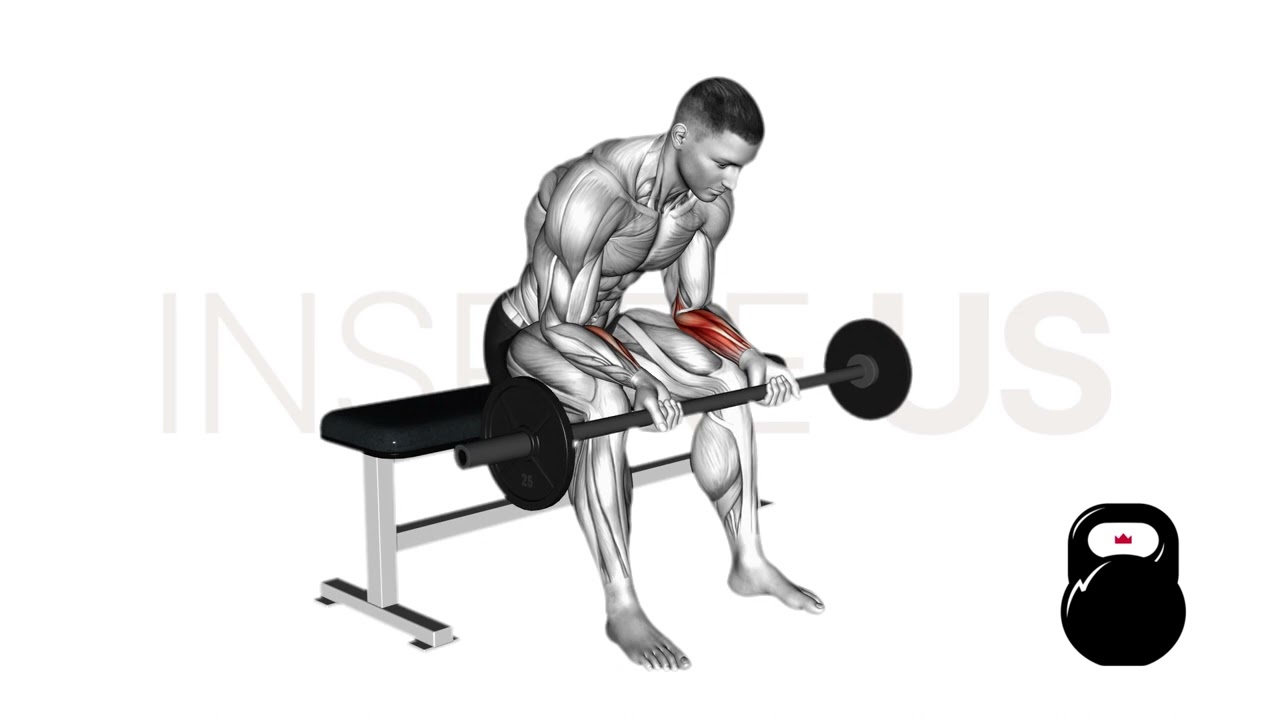Barbell Wrist Curl: Benefits, Muscles Worked, and More
Barbell wrist curls are a weighted exercise where you hold a bar in an underhand grip and curl using your wrists. This isolates the forearm muscles, and is regarded as one of the most effective ways of training the wrist flexors.
In this article, we will be discussing how best to perform the barbell wrist curl, its many benefits and whether it’s the right exercise to pick.
What is the Barbell Wrist Curl?
In technical examination, the barbell wrist curl can be classified as a single-joint closed chain isolation exercise. It is often performed using low amounts of weight and a moderate amount of volume so as to avoid injury or irritation.
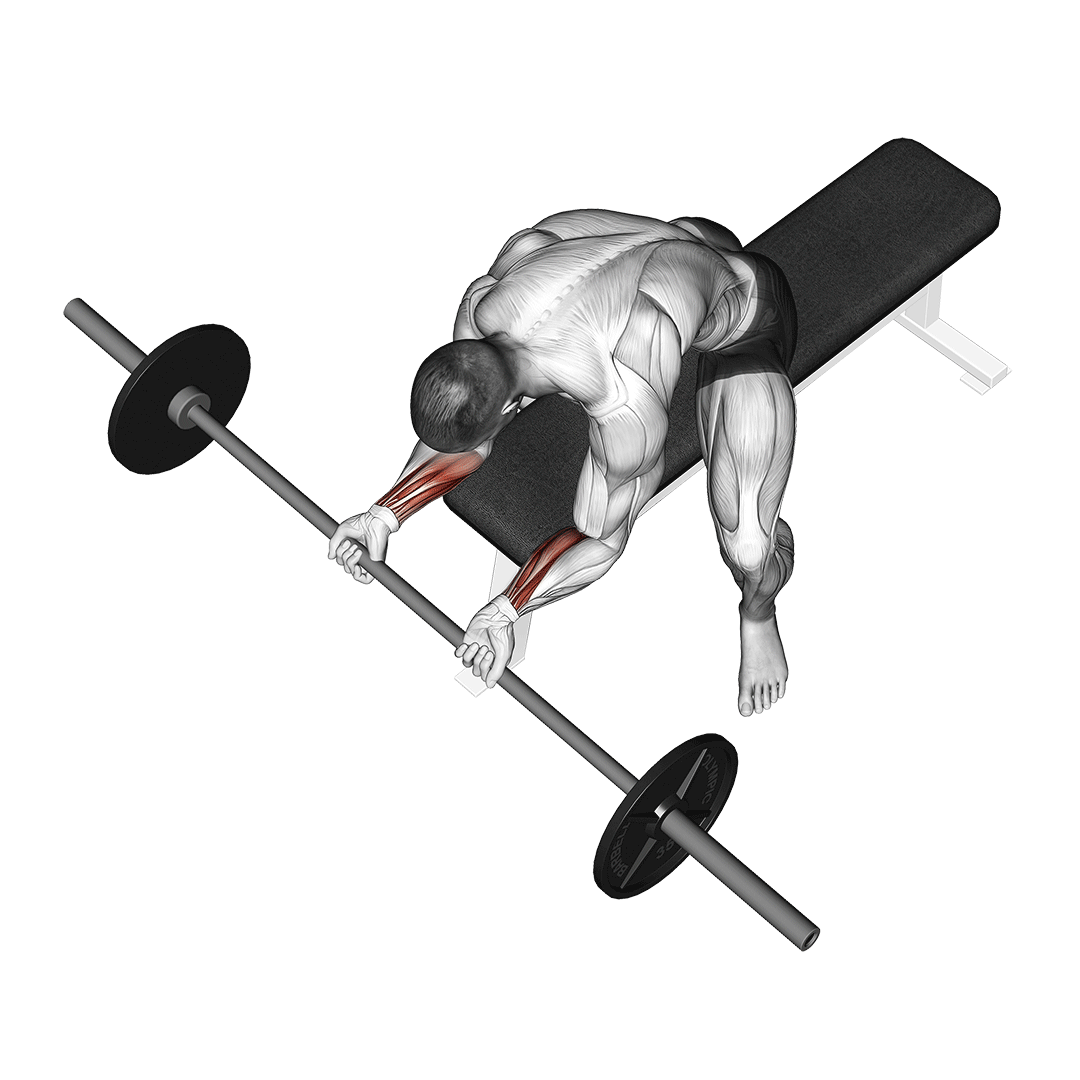
Barbell wrist curls are used alongside reverse wrist curls and other forearm isolation exercises so as to create a more comprehensive forearm workout - an important distinction, as the wrist curl only targets one section of the forearms.
Should You Do Wrist Curls with Barbells or Dumbbells? What’s the Difference?
While dumbbell wrist curls are somewhat safer and easier to perform, using a barbell allows for more weight to be lifted and a greater training intensity.

Is the Barbell Wrist Curl the Right Exercise for Your Needs?
If you lack wrist flexor strength or want to maximize hypertrophy of your forearms - then yes, barbell wrist curls are an excellent addition into your workout.
However, those with a history of wrist or forearm issues may wish to avoid wrist curls unless approved by a Physician.
How to do Barbell Wrist Curls Safely
To perform a repetition of barbell wrist curls, the lifter will sit with their wrists atop their knees, loaded barbell held in an underhand grip with both hands.
The hands should hang loosely off the knees, so long as the wrists are supported.
From this position, the lifter will contract the muscles of their forearms and curl their hands inwards.
Care should be taken to ensure that only the forearm muscles are being contracted, and that the wrists are aligned correctly with the bones of the forearms.
Once reaching the limit of their range of motion, the lifter will slowly reverse the movement - returning their wrists back to the starting position. This completes the repetition.
What Muscles do Barbell Wrist Curls Work?
Barbell wrist curls are an isolation exercise, and solely work the wrist flexor muscles.
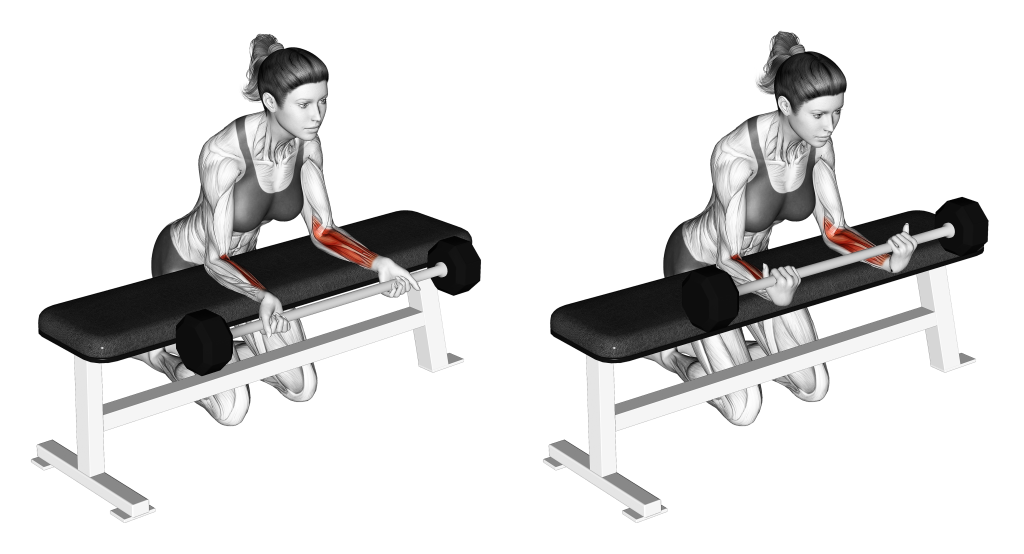
What are the Benefits of Barbell Wrist Curls?
When performed correctly, barbell wrist curls offer the following benefits.
Stronger and More Muscular Forearms
The forearm flexors make up a third of the forearm’s muscle groups, meaning that any subsequent hypertrophy also greatly contributes to the mass therein.
In addition, wrist and hand flexion play a significant role in nearly any movement involving the hands, and as such barbell wrist curls are quite important for developing forearm strength. This carries further into grip strength as well.
For greater emphasis on strength development, try performing barbell wrist curls alongside heavy isometric exercises like the farmers walk or dead hangs.
Reinforces Wrist Flexion and Stability
As the name implies, the forearm flexor muscles are directly responsible for flexion of the wrists. When trained regularly with barbell wrist curls, their capacity to perform the wrist flexion biomechanic is reinforced.
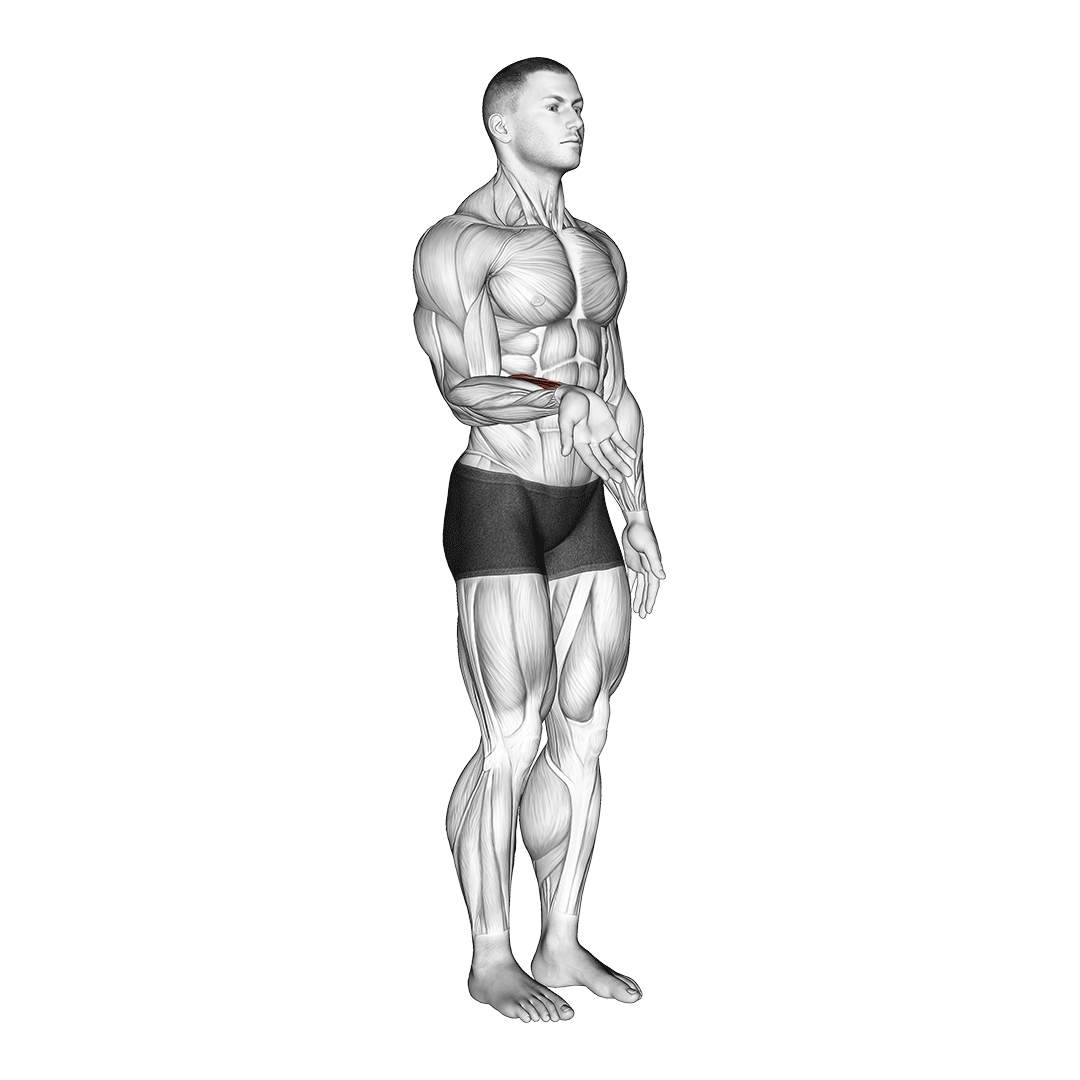
In addition, the same muscles are also partially responsible for stabilizing the hands and wrists through isometric contraction - something also strengthened by barbell wrist curls.
Simple and Easy to Perform
Barbell wrist curls are perfectly accessible for even novice weightlifters, both due to the simplicity of its form and the relatively low joint impact involved.
So long as the lifter remembers to keep their wrists properly aligned, barbell wrist curls are unlikely to result in injury and are perfectly suitable for individuals of all types.
Of course, remember to first consult a professional if you have a history of wrist injury or similar conditions.
High Capacity for Volume or Loading
Barbell wrist curls are able to be programmed for both high volume or significant weight, creating the opportunity for more advanced programming strategies like pyramid sets and drop sets.
Being able to focus the barbell wrist curl towards loading or volume further improves on the benefits of the exercise. Greater volume will allow for more hypertrophy, whereas more weight will create a more strength-focused workout.
Keep in mind that programming the exercise towards either aspect should be within a reasonable scale. Avoid lifting too much weight, or performing it to excess volume.
Common Barbell Wrist Curl Mistakes to Avoid
In order to get the most out of barbell wrist curls, avoid the following commonly made mistakes.
Excessive Momentum
When performing barbell wrist curls, it is important to go through the entire range of motion in a slow and controlled manner.
Allowing the hands to swing downwards or suddenly curling them up can place significant torsion on the wrists. With the additional pressure of the barbell, such torsion may result in injury.
Furthermore, this short time under tension can lead to poor results from the exercise as the forearm flexors are worked to a lesser degree.
In order to avoid damaging the wrists or negating the benefits of the exercise, ensure that each repetition takes several counts to complete, and that a full range of motion is achieved.
Raising the Wrists or Elbows
Although the wrists are meant to bend during the barbell wrist curl, raising them off the knees or even raising the entire forearm itself can shift the emphasis of the exercise.
Most often, if the lifter finds themselves raising their wrists during the exercise, it is because too much weight is being lifted for the forearm flexors to carry.
Try dialing the weight back and ensuring that the wrists remain stationary.
Bending the Wrists to the Sides
One common - but dangerous - mistake made with barbell wrist curls is bending the wrists to either side.
While this sort of error is somewhat less dangerous when performed with dumbbells, the fact that the barbell locks the hands into place means that the wrists may be contorted while under a significant amount of pressure.
With how delicate the individual connective tissues of the wrists are, making this mistake can easily lead to severe injury of the wrists.
As such, it is highly important to ensure that the wrists are aligned neutrally with the radius and ulna of the forearms - and that they bend straight backwards, not to the sides.
Failing to Support the Wrists
Another highly common error made with the barbell wrist curl is failing to support the wrists properly. Doing so can greatly reduce the amount of weight the wrist flexors will be able to move, and potentially hyperextend the wrists.
Before beginning a repetition of barbell wrist curls, ensure that the wrists are laid flat atop the knees and that only the hands rest off the edge.
Alternatives to the Barbell Wrist Curl
Barbell wrist curl not quite what you’re looking for? Try out the three following alternative exercises.
Reverse Wrist Curls
Unlike the palms-up wrist curl, reverse wrist curls feature a pronated or palms-down grip. This shifts the focus of the exercise towards the wrist extensor muscles - of which are the immediate counterpart to the wrist flexor muscles.
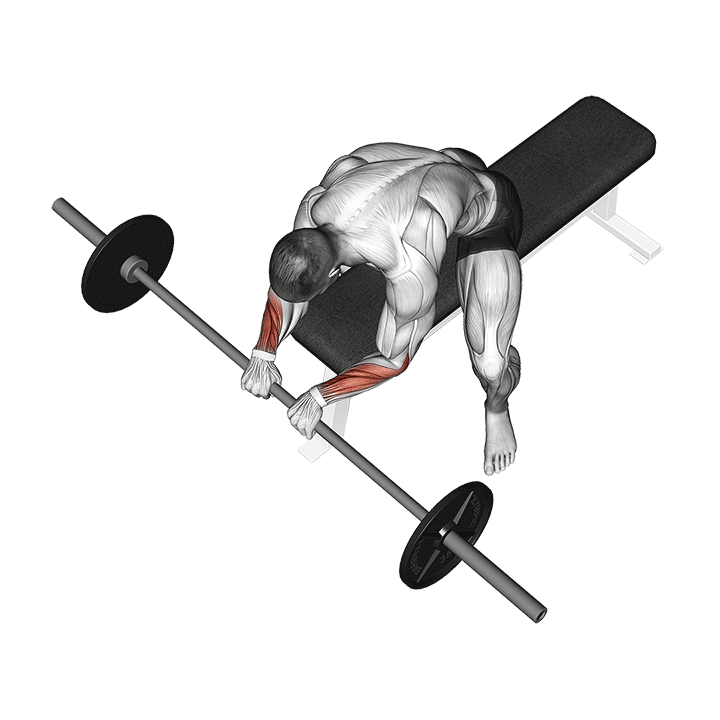
Reverse wrist curls may be used as either an alternative to barbell wrist curls, or as a complementary exercise for targeting two-thirds of the forearm muscles.
Behind-the-Back Wrist Curls
As the name implies, the behind-the-back wrist curl is simply a barbell wrist curl performed with the barbell held behind the body in a standing position. This increases the amount of weight lifted and reduces the risk of wrist injury, but may feature a shorter range of motion.
Wrist Rollers
Wrist rollers are a type of specially-purposed training equipment created for building up forearm strength and mass. They target the entirety of the forearm’s musculature - including the flexors - and are just as effective as barbell wrist curls.
Wrist rollers are perfect as a substitute to barbell wrist curls in cases where less loading and more functionality is needed.
Frequently Asked Questions (FAQ)
Are Barbell Wrist Curls Effective?
Yes - barbell wrist curls are highly effective at what they do. If building forearm mass and strength is among your training goals, try including 2-3 sets of this exercise into your program.
Should I Do Wrist Curls Everyday?
Although some argue that the forearm muscles recover quickly enough for daily training, it is better to err on the side of caution and avoid doing so.
Instead, try only doing wrist curls 3-4 times a week at most, with at least one day of recovery in between sessions.
How Important is Wrist Strength?
Wrist strength is an absolutely vital component of anyone’s physiology.
Not only do stronger wrists ensure that we are able to manipulate and control objects with our hands, but they also help prevent injury to the hands, fingers and forearms.
Final Thoughts
With the barbell wrist curl targeting your forearm flexors, don’t forget to give the rest of your forearm muscles some focus as well. Combine barbell wrist curls with hammer curls and reverse wrist curls for a more comprehensive workout.
In addition - remember that the standard straight barbell weighs 45 pounds (20 kilograms) and to factor that into your total training weight.
References
1. Stiggins, Chuck Ed.D.; Allsen, Phil Ph.D.. EXERCISE METHODS NOTEBOOK #39: Dumbbell wrist curl. National Strength and Conditioning Association Journal 10(6):p 81-81, December 1988.
2. Wikipedia contributors, "Wrist curl," Wikipedia, The Free Encyclopedia, https://en.wikipedia.org/w/index.php?title=Wrist_curl&oldid=902979501 (accessed July 2, 2023).

